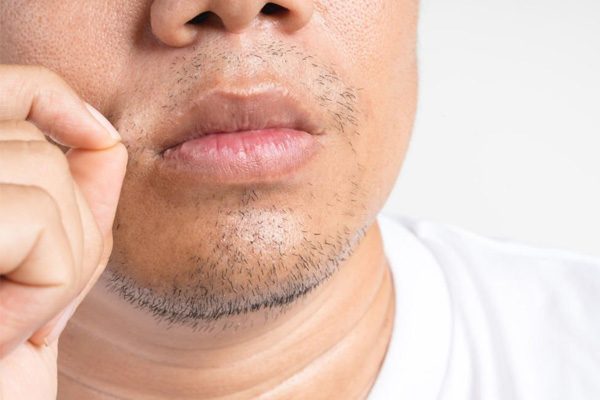

While ingrown hair most commonly appears in areas where the skin is shaved (beard, legs, pubic region), it can appear anywhere on the body. Ingrown hairs are more common among people with very curly hair. Most ingrown hairs occur in the beard area and this condition is very common in dark skin types.
The most common symptom of an ingrown hair is inflammation of the skin, followed by pus formation which often causes severe irritation. This causes people to try and remove the pus by squeezing or scratching and this can lead to leaving dark marks and even scars on the skin. However, each individual may experience symptoms differently. The symptoms of an ingrown hair may resemble other skin conditions. Always consult your doctor for a diagnosis.
The very best way to combat this problem is to remove the cause, i.e. remove the hair with Laser Hair removal.
In some cases, it may however be a better idea to first get the skin inflammation under control with treatments such as:
When needed, ingrown hair removal treatment may include:
Shaving tips that may help prevent ingrown hairs on the face include:
After 2 or 3 Laser hair removal treatments to improve and treat ingrown hairs, the post Inflammatory hyperpigmentation that remains can be treated with topical skin lighteners and/or in office Alpha hydroxy or Beta Hydroxy peels.
I am beyond happy and impressed at the level of professionalism and dedication the Skin Care team in Century City has shown so far! But most importantly, would like to say thank you to Dr Ross for recommending the treatments for me. I can already see the improvement and it’s only been a few weeks. Anyone struggling with acne, Skin Care can do what dermatologists cannot. I can safely say that I’m in good hands.
MoreI’ve been doing laser hair removal sessions with Yolanda for the past few months. Ive had laser in some areas before and it was a bit painful, but here, there’s virtually no pain. Yolanda takes the time to ice it before going in with the laser and that helps a lot. Im very happy with my experience here and the team is always very nice and professional. I can’t recommend them enough and I always look forward to going back.
MoreI'm currently having Laser hair removal at Skin Renewal Florida road. My therapist Is Kayleigh she has been exceptional. She is a Pro at what she does. All of the Staff are so Welcoming, Friendly and Very helpful. Thank you to the team for the great Service.Will Highly recommend.
MoreFor most people it's such a daunting experience to go out there and try something new. At skin renewal I felt so at home, with a streamlined admission and sign up procedure. The staff are incredibly knowledgeable about all the treatments they offer and don't mind answering questions. Believe you me I had many questions. For my first time I can definitely say I'll be back for more!. Highly recommended.
More